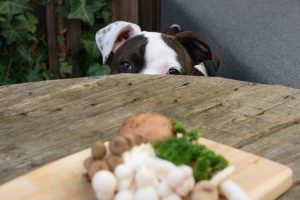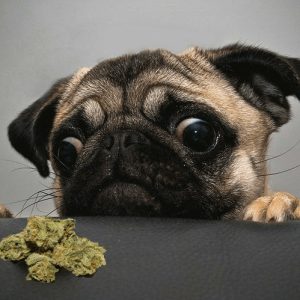Christmas trees and pets do not always mix. While older pets may be accustomed to the tradition of setting up a tree and adorning it with lights and other shiny things, many young pets may find this to be a very stimulating experience. Cats have been known to climb into Christmas trees, and dogs can take delight in jumping up and knocking the tree over. This poses the threat of injury to your pet, not to mention puts you in a bad mood.
Live Christmas trees pose an additional threat from the preservatives put in their water to keep them fresher for longer. Chemicals and accessible water do not mix as far as pets are concerned. Unable to differentiate between the tree’s water and water from their bowl, pets will likely slurp up the tree water and consequently develop an upset stomach from the chemicals. Cover the tree stand to limit your pet’s access to the treated water.
Ornaments are dainty, fragile things. They also bear a strong resemblance to many popular cat and dog toys. Therefore, the temptation to swat at, bite, and play with them can be irresistible for our four-legged companions. Not only is it extremely upsetting to have your favorite ornaments shatter, but the broken glass may also risk cutting and injuring your pet. To prevent this, place the more fragile ornaments higher up on the tree, or simply invest in shatter proof ornaments altogether.
Lights are also a dangerous temptation, especially for creatures that explore the world with their mouths. One bite too hard can sever the wires inside of lights, resulting in a quick shock to your pets. While they will certainly learn their lesson, the burns left on their mouths will be burdensome to them and you. Play it safe and make sure the lights are turned off when the tree is unsupervised.
While poinsettias have the bad reputation of being toxic, they are nowhere near as threatening to your pet’s health as holly is. The berries are considered by the ASPCA to be potentially toxic if consumed in large amounts, resulting in gastrointestinal irritation and depression of the central nervous system.1 The spiky holly leaves can also damage your pet’s intestinal tract as it makes its way down. Other poisonous holiday plants include mistletoe, amaryllis, and lilies.
Tinsel is perhaps the most dangerous feature on your tree. Ingesting just a few strands can result in the potentially deadly effects of intestinal obstruction. It is best to avoid putting tinsel (and other string-like decorations like curling ribbon) on your tree all together. Considering how severely tinsel sheds and ends up all over the place, this will not only keep your pet safe but also spare you from a great deal of irritation during the holiday season.
We recognize that trees are a staple decoration for the holiday season, so we are certainly not encouraging you to forgo tradition. We simply advise you to supervise your pets when they’re in the same room as the tree, and to restrict access to this room when you are not at home.







